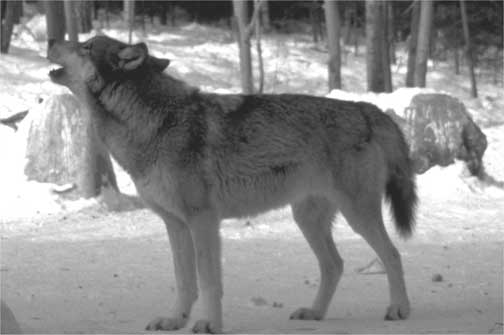

The grey wolf once roamed all over North America. Because of its diet, and body structure, the grey wolf can live in close to any climate. But, when people came from England, they brought with them hatred and bad stories about wolves. Stories like Little Red Ridding Hood, or The Three Little Pigs.
These stories influenced the people to believe that wolves were blood thirsty killers. Even though this obviously isn't true, the new comers saw wolves as a threat. They thought the only way to save themselves from these large dog-like creatures was to entirely execute the species. In the winter of 1946-1947, an official bounty hunt had begun towards wolves.
After the bounty hunt was issued, the population immediately began to dwindle. Eventually, in 1963, only 350 to 700 wolves were present. Finally, in 1965, Governor Karl Rolvaag vetoed the state's last bounty bill. Then, in 1966, the first federal Endangered Species Act. The Endangered Species Act of 1966 was the first pebble in the road towards recovery for the wolf population.
Slowly, very slowly, the grey wolf population began to grow. Steadily, the grey wolf population has grown to a healthy number. The future of wolves is looking bright and promising. Hopefully, canis lupus (grey wolves) will be on earth for many generations to see the majestic animal. (http://www.freewebs.com/mayawolf/thehistoryofwolves.htm)
